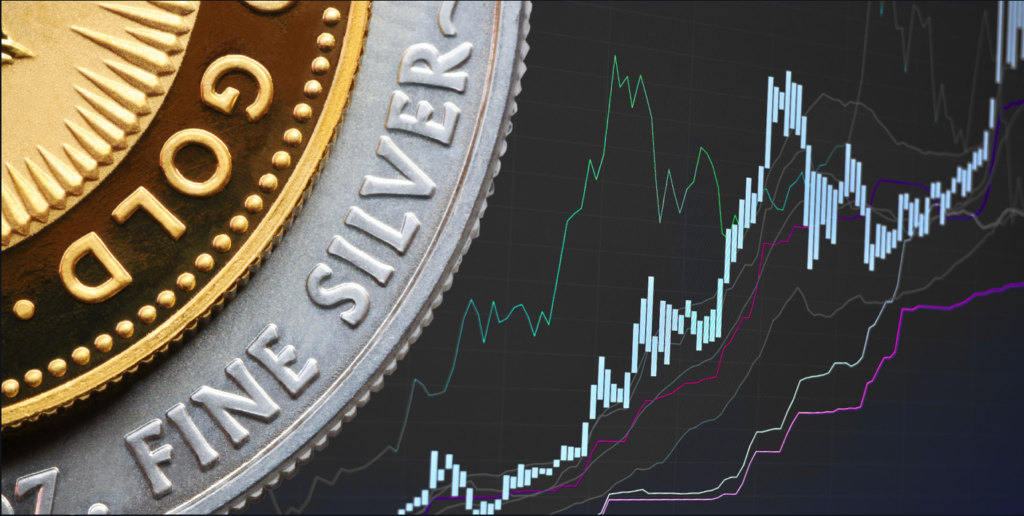
When gold reaches record highs and silver experiences sharp gains, investors move quickly to acquire physical metals. Market charts only show part of the picture. The global price differs from what you pay for a finished coin or bar.
Behind every ounce of gold or silver lies a premium. It’s an added cost that represents more than the metal content. Understanding this difference gives investors the clarity to recognize genuine value, rather than chasing low prices that may not always equate to better deals.
Bullion Premiums Explained
The term “spot price” describes the current trading value of a raw ounce of metal in real time. It reflects the live market rate before the metal is refined or minted. This price fluctuates constantly as currencies shift, inflation changes, and global markets react to news.
Purchasing gold or silver bullion costs more than the spot price because the finished product includes refined, verified, and expertly crafted metal.
That difference is known as the premium. It accounts for refining, minting, packaging, distribution, and dealer costs. More importantly, it reflects how supply and demand interact in the market.
During periods of economic uncertainty or high investor demand, premiums rise because mints and dealers can only produce so much metal at once. When markets calm down and supply stabilizes, premiums usually contract.
The Two-Part Price Tag: Spot Price vs. Premium
Consider the spot price as the foundation and the premium as the structure built on top. Without understanding both, an investor sees only half the picture. The spot price captures the raw value of gold or silver, but the premium captures the cost of bringing that value into a physical, tradable form.
Each bar, round, and coin carries a unique balance between spot price and premium. This balance shifts daily as global events, production costs, and investor sentiment fluctuate.
What Drives Bullion Premiums Higher or Lower
Premiums react to real-world conditions. When demand spikes or refining capacity tightens, premiums increase. When mints produce larger quantities or when demand cools, premiums fall. However, several other forces constantly influence these fluctuations.
Economic events strongly influence premiums. Inflation, interest rate shifts, and global instability often push investors toward metals as a hedge, driving premiums higher. Production costs differ by product type, with intricate coin designs requiring more time and craftsmanship, resulting in higher premiums than straightforward bullion bars.
Government-backed coins such as American Eagles command higher premiums due to their global recognition and guaranteed purity, while generic rounds tend to cost less.
Market Dynamics and Investor Behavior
Premiums fluctuate in cycles. During stable markets, investors often encounter moderate premiums and ample inventory. When volatility hits, demand spikes, supplies shrink, and premiums can jump quickly.
Seasonal trends also influence pricing. Summer months generally show softer demand and lower premiums, followed by increased buying activity later in the year.
Liquidity and Long-Term Value
Coins and bars with slightly higher premiums can often sell more quickly in secondary markets due to their trust and recognition. Lower-premium products may take longer to move, especially if they come from less-known mints.
Experienced investors often strike a balance between accumulating lower-premium bullion for long-term value and holding higher-premium coins for easy resale.
Using Premium Knowledge to Strengthen Investment Strategy
Understanding how premiums function turns a purchase into an informed decision. It helps identify when market excitement drives prices too high and when a calm period offers value opportunities.
Investors who compare dealers and track global market trends make more informed decisions. Watching both spot prices and premium movements helps them strengthen portfolio performance over time. It is key to understand that a product’s value depends on more than its weight. Liquidity, recognition, and production quality all shape a smarter buying strategy.
The Golden State Mint Difference
Golden State Mint operates as both a manufacturer and a dealer. Our team gives investors a transparent view of value from refinery to finished product. Our metals are known for low premiums, fast shipping, and quality that stands the test of time.
When you understand premiums, you understand opportunity. Explore our full selection of gold bullion and silver bullion bars & coins to see real value in action. Reach out to our team to learn how to make your next purchase count.














